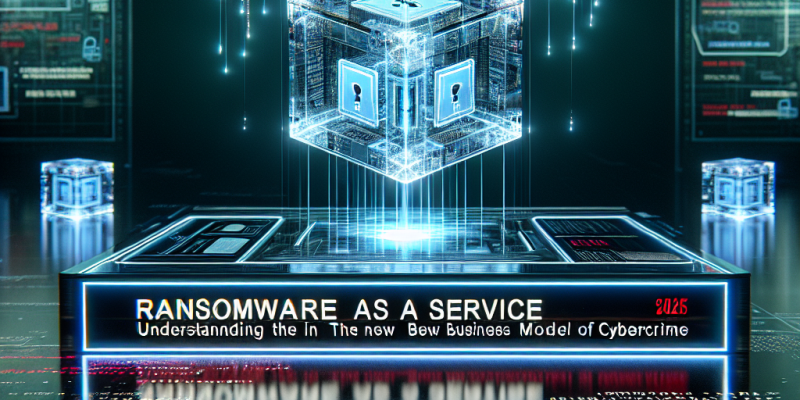Ransomware as a Service in 2025: Understanding the New Business Model of Cybercrime

Ransomware as a Service in 2025: Understanding the New Business Model of Cybercrime
As we move further into 2025, ransomware continues to evolve, becoming a more sophisticated and accessible threat for businesses and individuals alike. One of the most alarming trends in 2025 is the rise of Ransomware as a Service (RaaS). This new business model in cybercrime is changing the way attacks are carried out and how victims are targeted.
What is Ransomware as a Service?
Ransomware as a Service is similar to traditional software as a service (SaaS) models. In RaaS, cybercriminals develop and provide ransomware tools and infrastructure, allowing other criminals to use them to launch attacks. This means that even those who lack technical skills can easily become ransomware attackers by purchasing or renting these tools.
How RaaS Works
-
Subscription Model: Most RaaS operations allow users to subscribe for a fee. This fee can vary, depending on the features provided. For example, some services offer more sophisticated encryption methods for a higher price.
-
User-Friendly Interfaces: Many RaaS platforms come with easy-to-use interfaces. This helps users, even those without technical backgrounds, to deploy attacks quickly and efficiently.
-
Profit Sharing: In most cases, the RaaS provider and the attacker split the ransom payments. For example, the provider might take 20-30% of the ransom money, creating an attractive incentive for both parties.
-
Customer Support: Surprisingly, many RaaS providers offer customer support to their users. This can include guidance on how to carry out attacks and even assistance with negotiating ransoms.
The Impact of RaaS
The rise of RaaS has significant implications for cybersecurity. Here are some of the effects we are seeing in 2025:
Increased Accessibility for Attackers
RaaS has lowered the barrier to entry for cybercriminals. Anyone with a few hundred dollars can rent ransomware tools. This democratization of cybercrime means that we are witnessing a surge in attacks from less experienced individuals, making it harder for law enforcement to track and deter attackers.
Higher Frequency of Attacks
As more people can access these tools, the frequency of ransomware attacks has skyrocketed. Organizations of all sizes, from small businesses to large corporations, are becoming targets. In 2025, ransomware attacks occur every 11 seconds on average, causing chaos and significant financial loss.
Evolving Tactics
RaaS developers are constantly improving their products. Today’s ransomware is more advanced, featuring techniques like double extortion. In this model, attackers not only encrypt files but also steal sensitive data, threatening to release it if the ransom is not paid. This has made victims more likely to pay, fearing long-term damage to their reputation and finances.
Protecting Against RaaS Threats
With RaaS becoming a mainstream threat, it’s crucial for organizations to enhance their cybersecurity measures. Here are some strategies to consider:
-
Regular Backups: Keeping regular backups of important data can help businesses recover without paying a ransom. It’s essential to store backups in a secure location, ideally offsite.
-
Employee Training: Since human error is often the entry point for ransomware, training employees on recognizing phishing attempts and suspicious activities can help prevent attacks.
-
Update Software: Keeping software and systems updated can close vulnerabilities that ransomware might exploit.
-
Incident Response Plan: Having a well-defined incident response plan in place can minimize damage and reduce downtime in case of an attack.
Conclusion
Ransomware as a Service is a new and dangerous chapter in the world of cybercrime. Its ability to lower the entry barriers for attackers and increase the frequency and sophistication of attacks makes it a serious concern for everyone. As we continue into 2025, organizations must adapt their cybersecurity strategies to counter this evolving threat. The battle against ransomware is far from over, and it will require constant vigilance and innovation to protect against the risks it poses.














